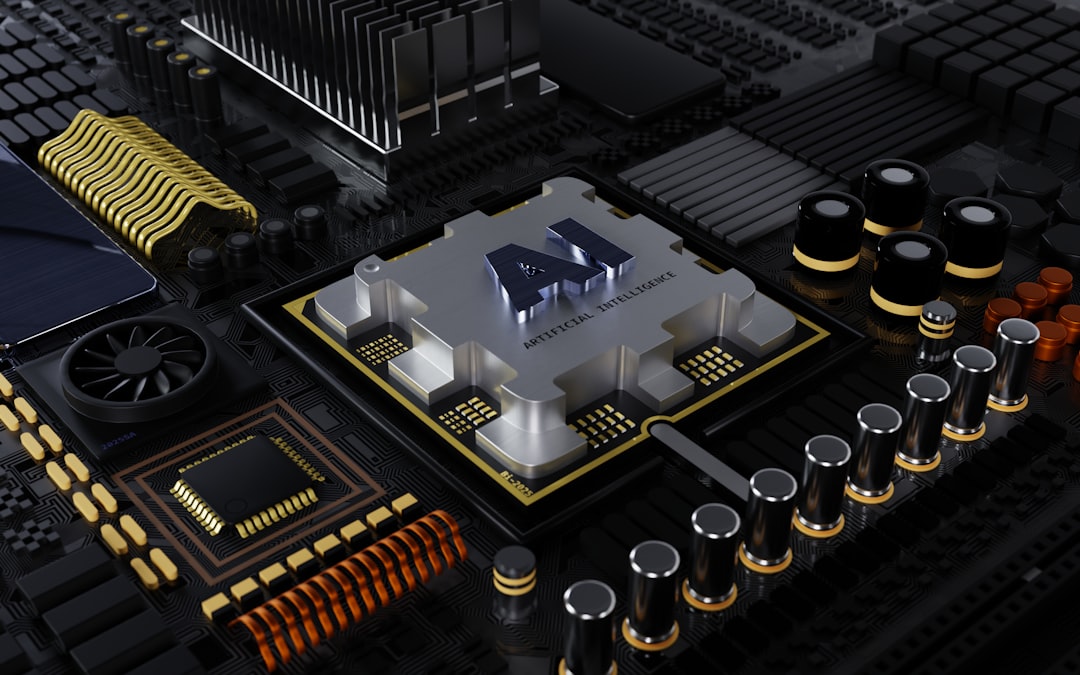7 Key Innovations in Identity and Access Management Courses for Enterprise AI Integration
7 Key Innovations in Identity and Access Management Courses for Enterprise AI Integration - AI-Powered Adaptive Authentication in IAM Courses
AI is injecting new life into Identity and Access Management (IAM) by moving beyond static authentication methods. The old way of doing things, where passwords were the sole gatekeeper, is being challenged by adaptive authentication systems that leverage AI. These systems analyze a wealth of information in real-time, such as your location, the device you're using, and even your browsing patterns, to make sure you're really who you say you are.
The beauty of this approach is that it not only bolsters security but also makes it much easier to spot fraudulent activity. This real-time analysis empowers organizations to comply with evolving regulatory demands and build stronger trust with their users.
But it's more than just reactive security. AI-powered IAM solutions are proactive. They can detect suspicious user behavior before it turns into a major problem. This helps organizations stay one step ahead of increasingly sophisticated cyber threats and reassures users that their data is protected.
The integration of AI into Identity and Access Management (IAM) is sparking exciting changes, particularly in the area of adaptive authentication. This dynamic approach to security is moving beyond static, traditional methods like passwords.
One of the more fascinating aspects of this shift is the ability of AI to analyze user behavior in real-time. The system can differentiate between typical and suspicious activities, enhancing the protection against unauthorized access. This raises intriguing possibilities around the future of user authentication, potentially eliminating the need for traditional passwords altogether.
Another aspect that has caught my attention is the use of AI for regulatory compliance. With AI constantly assessing user risk, organizations can adapt their security policies dynamically, improving their adherence to regulations like GDPR and HIPAA. This is a significant improvement over static approaches to compliance.
While the benefits of AI-driven adaptive authentication are compelling, there are some concerns to consider. The continuous monitoring of user behavior could raise privacy issues, and balancing effective security with user privacy will be a critical challenge for enterprises. The rapid evolution of cyber threats has led to the creation of more comprehensive security infrastructures, combining AI-driven adaptive authentication with other advanced security measures like threat intelligence feeds. It remains to be seen how effectively these systems will combat emerging threats in the future.
7 Key Innovations in Identity and Access Management Courses for Enterprise AI Integration - Machine Learning for Anomaly Detection in Access Patterns
Machine learning is becoming increasingly important in detecting anomalies within access patterns. This is a crucial part of modern identity and access management (IAM) systems, as they are constantly evolving to address new security challenges.
Unsupervised machine learning methods are particularly effective in this area. These systems can identify unusual user behavior without relying on pre-defined labels or training data. This makes them much more adaptable to new and evolving threats.
This is especially important given the recent rise of remote work and the Internet of Things (IoT), both of which generate huge amounts of data that can be difficult to analyze using traditional security methods.
In addition to identifying suspicious activity, machine learning can also be used to implement more flexible and responsive security measures. This means that organizations can adapt their security policies more effectively to address new threats as they emerge.
Ultimately, as IAM continues to evolve, leveraging the power of advanced analytics will be critical for maintaining robust identity protection in the face of escalating cyber threats.
Anomaly detection in access patterns, using machine learning, isn't entirely new. Its roots stretch back decades in statistics and signal processing. Early systems mostly focused on spotting outliers in numeric data. Now, we have complex model-based methods.
But today, we face a different challenge: the sheer volume of access pattern data is enormous, often in petabytes. Machine learning algorithms need to sift through this data efficiently to find potential anomalies. This requires scalable architectures and careful data preparation.
There are several approaches to anomaly detection: supervised, unsupervised, and semi-supervised learning. Unsupervised methods are particularly useful when labeled data is scarce or unavailable. This is a common situation in IAM.
Getting the right features from access patterns is crucial for effective anomaly detection. Things like time of access, location, and device type are important. Automating feature selection is a growing area of research to boost model performance.
Evaluating the accuracy of anomaly detection models can be tricky. Common metrics like precision, recall, and F1-score can be misleading when the dataset has an uneven distribution of normal and abnormal data. We need more tailored evaluation approaches for different IAM use cases.
False positives can be a real issue, especially when the model is too sensitive. This can lead to "alert fatigue," where users get used to seeing warnings and ignore genuine ones, potentially increasing security risks.
Anomaly detection systems must operate in real-time to be effective. This impacts architectural choices. Stream processing frameworks are becoming popular because they can handle continuous data streams, enabling timely detection of anomalies as they occur.
But deploying machine learning for anomaly detection also raises significant privacy concerns. Techniques like differential privacy and federated learning are being investigated to allow for effective detection without compromising individual user data.
It's important to realize that these systems can be vulnerable to adversarial attacks, where attackers intentionally create deceptive patterns in the data. Researchers are working on ways to make these systems more resilient.
Finally, combining machine learning anomaly detection with threat intelligence feeds can provide valuable context. This helps the system interpret anomalies more accurately, allowing for faster and more informed responses to potential security incidents.
7 Key Innovations in Identity and Access Management Courses for Enterprise AI Integration - Natural Language Processing for Policy Management Training
Natural Language Processing (NLP) has emerged as a powerful tool for policy management training, transforming how organizations create, interpret, and implement policies. This technology enables automated compliance checks and enhances policy clarity using techniques like sentiment analysis and entity recognition. Advanced NLP models, such as BERT, are trained on vast datasets and can readily analyze and understand intricate regulatory texts, making it easier for organizations to adapt to various legal frameworks. The integration of NLP has the potential to streamline policy management processes, making them more dynamic and responsive to evolving regulations and organizational needs. However, there are challenges, particularly in preventing biases or misinterpretations that could hinder compliance efforts.
Natural Language Processing (NLP) is rapidly becoming a key player in the realm of policy management. It's fascinating how these systems can analyze and process human language, opening up new possibilities for improving efficiency and clarity in policy creation, implementation, and compliance.
Imagine NLP tools being able to automatically draft and update policies, saving countless hours and reducing the risk of errors. These systems can even identify and extract key compliance requirements from dense legal texts, making it much easier for organizations to stay on top of changing regulations across different jurisdictions.
And it's not just about efficiency, NLP can also help improve user engagement. Sentiment analysis can gauge user reactions to existing policies, providing valuable insights to refine and tailor them to meet user expectations.
However, it's important to remember that NLP is still evolving, and its use in policy management requires careful consideration. One significant challenge is the potential for bias in algorithms. If the models are trained on datasets that lack diversity, the results could be skewed, leading to unfair or discriminatory policy recommendations. It's crucial to address these issues through continuous evaluation and improvement of training data to ensure fairness and equity.
While there are certainly challenges, the potential of NLP in policy management is undeniable. As the technology continues to evolve, I expect it to become a valuable asset for organizations seeking to streamline their policy processes, improve compliance, and enhance user experience.
7 Key Innovations in Identity and Access Management Courses for Enterprise AI Integration - Blockchain Integration for Decentralized Identity Verification
Blockchain integration for decentralized identity verification is revolutionizing how we manage digital identities. It leverages blockchain's inherent transparency and immutability to create a system where users have more control over their own data, and security is enhanced. Smart contracts automate the verification process, tackling the inconsistencies and vulnerabilities present in traditional systems. Because of its decentralized nature, blockchain enables identity verification even in areas lacking conventional infrastructure, opening up access to those previously excluded. However, challenges still exist, notably in the areas of scalability and the need for seamless cross-domain authentication. The decentralized identity management landscape is constantly evolving, seeking to overcome these hurdles while harnessing the inherent power of blockchain technology.
Blockchain technology is being explored for its potential to revolutionize identity verification. It's a fascinating area of research, and I'm intrigued by the ways it could disrupt traditional identity and access management (IAM) systems.
One of the most interesting aspects is the concept of **immutability**. Blockchain ensures that once data is recorded, it's incredibly difficult to alter it. This creates a secure environment for storing identity information, making it much harder for malicious actors to tamper with records.
Another key concept is **self-sovereign identity**. This means users control their own identity data, rather than relying on centralized databases. This could potentially empower individuals to share only the information necessary for specific transactions, minimizing the risk of data exposure.
Blockchain's **decentralized trust model** is another intriguing aspect. It allows trust to be established through consensus mechanisms rather than relying on a central authority. This could have profound implications for verifying identities in situations where there may be a lack of trust in traditional institutions.
**Interoperability** is another benefit of blockchain for identity verification. It has the potential to create a standardized system for identity, making it easier for users to manage their identities across various platforms and services.
**Privacy enhancements** are another area where blockchain shows promise. The use of zero-knowledge proofs can allow parties to verify identity data without revealing sensitive personal information.
There's also a potential for **cost efficiency** through the use of blockchain. By streamlining identity verification processes, organizations could potentially save money by reducing the need for intermediaries and manual processing.
The scalability of blockchain is another critical aspect to consider. It's designed to handle large volumes of transactions, making it suitable for scenarios involving many users, such as large-scale events or systems requiring rapid onboarding.
**Multi-factor authentication integration** is another potential application of blockchain. This could mean incorporating various forms of identification, such as biometric authentication, to further enhance security.
**Dispute resolution** can also be streamlined using blockchain. The transparent history of transactions makes it easier to audit claims and verify user actions, potentially reducing the need for complex legal processes.
Finally, blockchain solutions can be designed with **regulatory compliance** in mind. By incorporating regulatory requirements directly into the verification process, it may be easier for organizations to adapt to evolving legal frameworks.
While there are many potential benefits, it's important to acknowledge that blockchain technology is still evolving. There are challenges to overcome, such as concerns about scalability, security vulnerabilities, and the potential for misuse. It will be interesting to see how the research and development of decentralized identity verification solutions progress over time.
7 Key Innovations in Identity and Access Management Courses for Enterprise AI Integration - Quantum-Resistant Cryptography in IAM Curriculum
The field of Identity and Access Management (IAM) is undergoing a significant transformation, and a crucial part of this evolution involves incorporating quantum-resistant cryptography into curricula. This shift is driven by the emergence of quantum computing, which has the potential to break traditional encryption methods. NIST is leading the way by defining new cryptographic standards designed to withstand the power of quantum computers.
Organizations are being pressured to adapt their security protocols to a quantum-safe environment. The shift toward quantum-resistant cryptography is not just a technical update; it represents a fundamental change in the way identities are secured in a digital world increasingly vulnerable to quantum-enabled attacks.
By incorporating quantum-resistant measures into IAM frameworks, organizations can strengthen their cybersecurity strategies and foster more secure trusting relationships between users and their systems. However, this transition is a major undertaking, requiring extensive planning and commitment over a significant period.
Quantum computing is poised to shake things up in the world of cryptography, and that includes how we handle identity and access management (IAM). The traditional methods we rely on, like factoring and discrete logarithms, are vulnerable to attack by quantum computers. This means we need to look at entirely new cryptographic approaches, dubbed "post-quantum cryptography" (PQC).
The National Institute of Standards and Technology (NIST) is spearheading the development of these new algorithms, aiming to establish a secure foundation for the post-quantum era. One promising avenue is lattice-based cryptography, built upon complex mathematical structures that seem resistant to quantum attacks.
While fully transitioning to PQC might take time, we're already seeing hybrid systems emerge, combining older methods with PQC for a gradual shift. It's a bit like a gradual bridge-building process, slowly building our way to a secure future.
Of course, any shift has its challenges. Quantum-resistant algorithms often require bigger keys, which can mean performance hiccups. It's a trade-off: more security can lead to more computational resources needed.
Another challenge is getting people up to speed on these new technologies. It's like learning a whole new language, with new jargon and concepts to grasp. We'll need robust educational resources to bridge the gap, particularly for professionals working in IAM.
I find this all incredibly fascinating. Imagine how PQC will transform public key infrastructure (PKI), which is the backbone of online security. It's not just about replacing old algorithms; it's about a fundamental shift in how we think about trust and security in the digital realm.
Then there's the exciting possibility of Quantum Key Distribution (QKD). This technology leverages the bizarre world of quantum mechanics to securely share keys. It could add a whole new layer of security to PQC, although the practical implementation still needs refining.
It's a time of immense change and uncertainty, but it's also a time of tremendous opportunity. As we move into the quantum era, the field of IAM is bound to be reshaped. It's a journey that will require vigilance, innovation, and a willingness to learn. And, it will be quite a ride.
7 Key Innovations in Identity and Access Management Courses for Enterprise AI Integration - Edge Computing for Real-Time Access Decision Making
Edge computing is quickly becoming a key player in making real-time decisions about access, affecting everything from how we use our phones to complex industrial systems. It's all about doing the heavy lifting of analyzing data closer to where it's created, which means less lag time and quicker responses. This is crucial for industries where seconds count, like healthcare or manufacturing, because it allows for decisions to be made instantly based on the latest information.
Combining edge computing with artificial intelligence takes this a step further. AI can make these decisions even smarter and more responsive, constantly learning and adapting to changing needs. But with great power comes great responsibility, as they say. As companies dive deeper into edge computing, they'll have to seriously consider data privacy and security. It's not just about making things work faster, it's about doing it responsibly and safeguarding sensitive information.
Edge computing is changing how we think about real-time access decisions. By bringing processing power closer to the data sources, we can drastically reduce latency, which is crucial for things like financial transactions or emergency medical responses. This also makes the system more secure by shrinking the window of vulnerability for attackers to intercept information.
Research shows that edge computing can achieve incredibly fast response times, in the realm of milliseconds. This opens up possibilities for reacting to suspicious activity in real-time, which is a huge boon for security.
The explosion of IoT devices is also driving the adoption of edge computing. It allows these devices to process information locally, enabling smarter automation in industrial settings. This reduces reliance on centralized cloud processing and gives organizations more flexibility.
The regulatory landscape is also pushing towards edge computing. Because it allows organizations to manage data at the source, they can better comply with data regulations like GDPR.
However, there are challenges. One is scalability. Managing a distributed network of edge devices is complex and ensuring updates and security patches are applied consistently across the entire network is tough.
Cost is another factor. While edge computing can reduce the cost of transmitting data, the initial investment in infrastructure can be significant. Organizations need to carefully weigh the potential benefits against the upfront costs.
The decentralized nature of edge computing is intriguing. It allows devices to make decisions independently based on pre-set rules and real-time analysis, reducing the need for a centralized control system.
Finally, it's important to recognize that edge computing isn't meant to replace the cloud. It works best in tandem with cloud services. This allows organizations to leverage both the speed of local processing and the storage capacity of the cloud for a more holistic access management strategy.
All in all, edge computing offers a fascinating solution to some of the challenges associated with real-time access decisions. As the technology evolves, it will be interesting to see how it shapes the future of security and data management.
More Posts from aitutorialmaker.com:
- →Understanding AI Through Life's Journey A Technical Analysis of Neural Network Metaphors
- →A Comparative Analysis of Free Digital Marketing Certifications Google, HubSpot, and Semrush Academy in 2024
- →7 Key Metrics to Evaluate Options Trading Course Effectiveness in 2024
- →7 AI-Powered Sales Training Platforms Offering Free Certification Courses in 2024
- →7 Most Common Fashion Design Questions That You Should Google First Before Asking Your Designer
- →AI-Driven Scheduling The Future of Dental Reception Training





